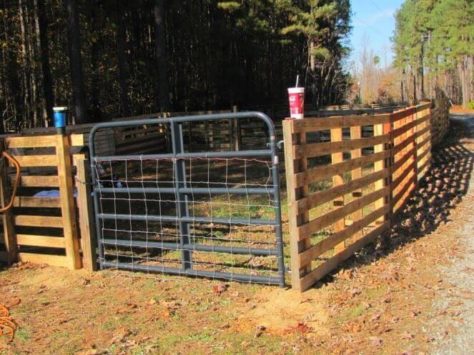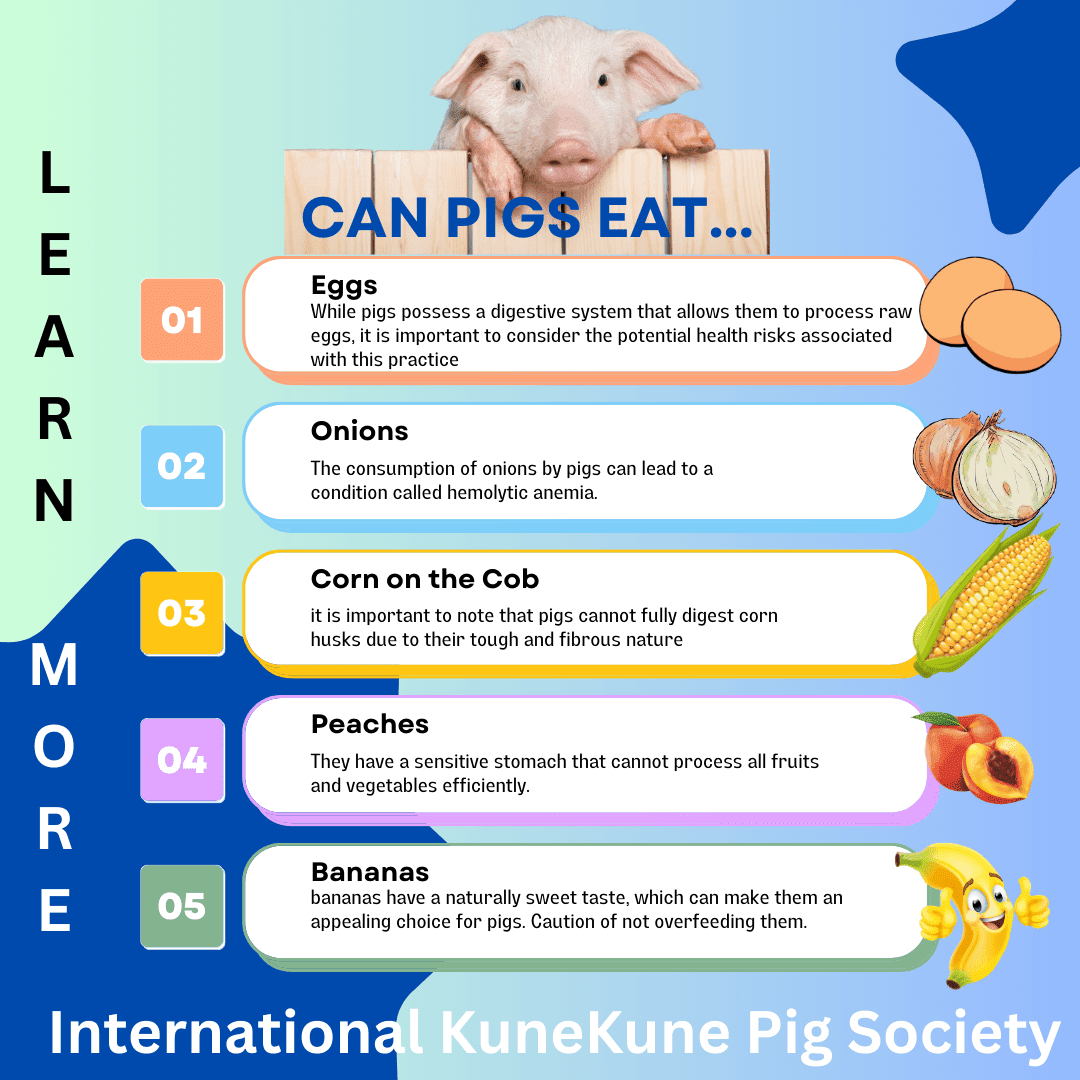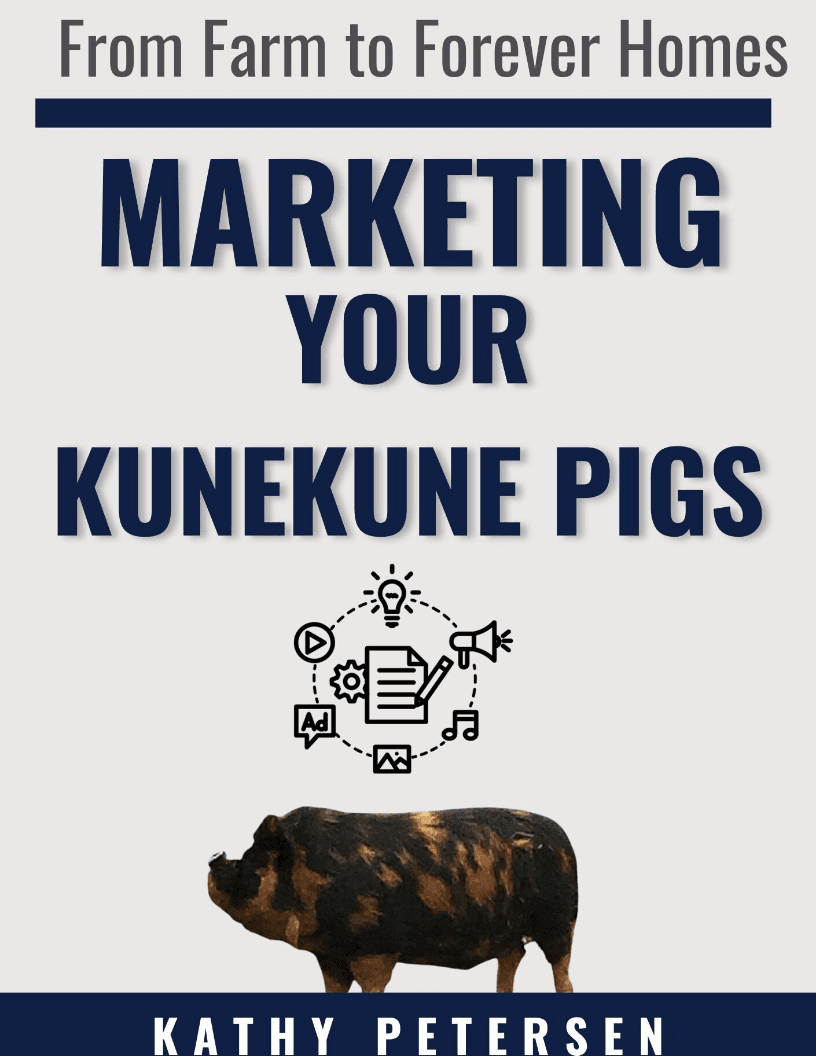
JOIN US
GET OUR KUNEKUNE
NEWSLETTER
New and highly discounted products, fresh and hot stories & useful information
A Complete Guide
Cost Involved in Breeding KuneKune pigs
Learn the cost involved in breeding KuneKune pigs in this complete guide covering the start-up cost, expenses, and important things to consider before you embark on this exciting new venture of raising KuneKune pigs for fun and profit.
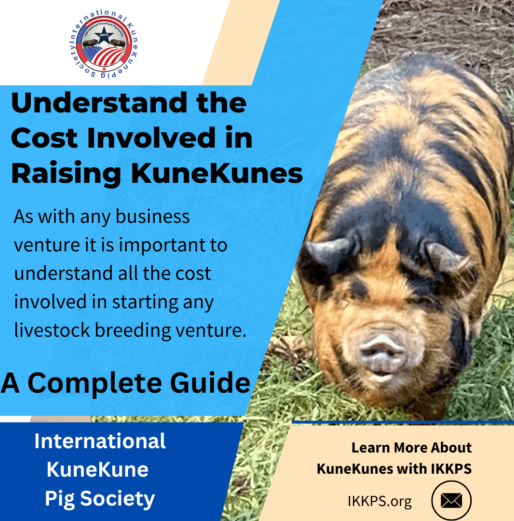
Are you considering venturing into the world of KuneKune pig breeding? Before you dive headfirst into this exciting endeavor, it's crucial to understand the cost involved in breeding KuneKune pigs. From the initial investment in quality breeding stock to ongoing expenses like feed, healthcare, and housing, there are several factors to consider. In this comprehensive breakdown, we will explore the various aspects of pig breeding costs, providing you with a clear understanding of what it takes to start and maintain a successful pig breeding operation. Whether you're a novice breeder or a seasoned farmer looking to expand your livestock, this guide will equip you with the knowledge and insights you need to make informed decisions and maximize your profitability. So, let's roll up our sleeves and delve into the world of pig breeding economics. Get ready to discover the true costs and potential rewards in this fascinating industry.
Factors influencing the cost involved in breeding KuneKune pigs.
Breeding pigs involves several factors that influence the overall cost of the operation. The breed of the pigs, the number of animals you plan to breed, and the quality of the breeding stock are some of the primary considerations. Additionally, the geographical location, the availability and cost of feed, and the prevailing market conditions can also impact the expenses. It's important to thoroughly evaluate these factors before embarking on your pig breeding journey.
Another crucial aspect to consider is the scale of your operation. Whether you plan to breed pigs on a small scale for personal consumption or on a larger more commercial scale, the costs will vary significantly. Smaller operations may require less investment upfront but could have higher per-unit costs, whereas larger commercial operations may have higher initial investments but benefit from the larger scale of pigs and the ability to produce a higher number of piglets.
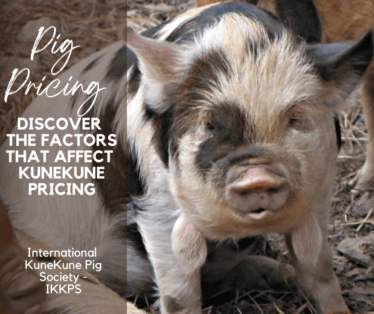
Initial investment cost involved in breeding KuneKune pigs.
The initial investment in pig breeding primarily includes the purchase of quality breeding stock. It is important to choose healthy and genetically superior pigs that are specifically bred for the traits you desire and are as close to the breed standards as possible. Remember that you want to start with good solid stock. Purchasing registered KuneKunes is the way to go as you know they are purebred KuneKunes that will have the characteristics of the breed. The cost of breeding stock can vary depending on the breed, age, and genetic quality of the animals. It's advisable to work with a reputable pig breeder or consult with a seasoned KuneKune breeder to ensure you make the right choices.
It is tempting to consider lesser-quality animals to get started. That is not always beneficial as you have to breed through years of generations to get to where you want to be. So purchase the best possible stock so that you will be generations ahead in your breeding program. What I bred when I started was a long ways from where I was after 10 years of breeding. Over time you develop an "eye" for conformation and quality. It will develop as time passes.
In addition to the breeding stock, you will also need to invest in suitable housing and infrastructure. This includes constructing pig fences or shelters that provide adequate space and protection for the animals. The cost of housing will depend on the size of the operation, the materials used, and any additional facilities required for feeding, waste management, and ventilation.
Costs of pig housing and infrastructure.
The cost of pig housing and infrastructure can vary depending on the materials and design chosen. Traditional options like wooden or concrete structures can be cost-effective but may require regular maintenance. Alternatively, more modern options like prefabricated steel buildings, livestock huts, or hoop houses can offer durability and ease of maintenance but may come with a higher upfront cost. These can be found from many distributors but, be sure to check Craiglist in your area as well so that you can find deals where you can.
Maybe you have a handy husband or neighbor that you can get to assist you with building pig houses. That can certainly save you money in building your own. For fencing, we started with pallet fencing as we were getting pallets free. Nothing beats free. If you paint it, it looks nice and will stay look well for years to come. So check with your local building supplies, Home Depot, and Lowes to see if you can obtain some for free.
It's important to provide pigs with enough space to move around comfortably and to separate different age or gender groups to prevent unwanted pregnancy and injury. Adequate ventilation is also crucial to maintain good air quality and minimize the risk of respiratory diseases. Additionally, investing in proper flooring and waste management systems will help maintain cleanliness and reduce health issues.
We will cover farrowing quarters in another article but, for the cost involved, I wanted to remind you that you will need a safe secure area for birthing and raising your piglets.
Feeding and nutrition expenses.
Feeding pigs is a significant ongoing expense in pig breeding. The cost of feed will depend on several factors, including the quality of the feed, the size and age of the pigs, and the prevailing market prices. It's essential to provide a balanced diet that meets the nutritional requirements of the pigs at each stage of their growth.
Luckily when choosing KuneKune pigs, you will save on the feed cost over other breeds of swine as a KuneKune is a true grazing pig. They require little supplementation with grain. Just 2 cups of grain twice a day is all that a KuneKune requires. In the summer when you have those lush green pastures it can even be further reduced. Keep in mind that breeding stock will need to have some grain to be productive in your breeding program.
The main components of a pig's diet include grains, protein sources like soybean meal, vitamins, and minerals. While commercial pig feed is readily available, some breeders prefer to formulate their feed to control costs and ensure quality. However, formulating your feed requires a good understanding of pig nutrition and access to appropriate ingredients.
Veterinary care and health management costs
Maintaining the health of your breeding stock and managing potential disease outbreaks is crucial to the success of your pig breeding operation. While KuneKunes are a very hardy breed of pigs, it is good to have a veterinarian handy in case of an emergency. Vaccinations and preventive measures can help minimize the risk of illness and keep your pigs healthy. The cost of veterinary care will depend on the size of your operation and the prevailing rates in your area.
It's important to have a good working relationship with a veterinarian who specializes in pig health. They can provide guidance on disease prevention, diagnose illnesses, treat any health issues, and advise on appropriate medications or vaccinations. Additionally, investing in biosecurity measures and proper sanitation practices can help reduce the risk of disease transmission and lower health management costs.
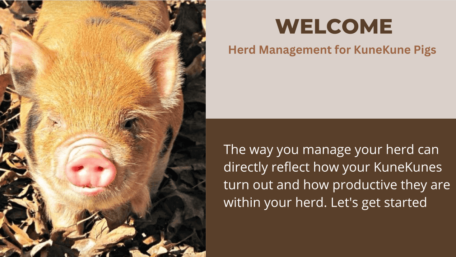
Breeding and genetic expenses.
Breeding and genetics play a significant role in the success of your pig breeding operation. If you aim to produce high-quality piglets with desirable traits, you may need to spend some time learning the breed standards and doing your homework on the breed. Purchasing superior genetics from renowned breeders helps to ensure your success as a breeder. The cost of breeding services or acquiring new genetics can vary depending on the breed, the reputation of the breeder, and the availability of desired traits.
It's important to carefully select breeding stock that aligns with your breeding objectives and desired market demand. This will help ensure that your breeding program produces pigs with the desired characteristics, such as good meat quality, or disease resistance. Regularly evaluating and culling underperforming animals will also help maintain the genetic quality of your herd. It is important to understand the word “culling”. Culling does not necessarily mean killing, it can mean removing them from your breeding program or utilizing them for pork.
Labor and management costs.
Breeding pigs requires consistent care and management, which can involve significant labor costs. From daily feeding and cleaning to monitoring the health and reproductive status of the animals, dedicated personnel or farm hands may be necessary, especially for larger operations. The cost of labor will depend on factors such as the size of the operation, the skill level required, and the prevailing wages in your area. In most cases, the owner is the “hired hand” and tends to their herd of KuneKune pigs.
Proper training and supervision of farm staff are essential to ensure that tasks are carried out efficiently and effectively. It's important to establish clear protocols and standard operating procedures for various aspects of pig breeding, such as feeding, health checks, and record-keeping. This will help optimize labor efficiency and minimize unnecessary expenses.
Additionally, it is important if you are not hiring a farm hand that you have a "farm sitter" or another individual that can cover for unexpected circumstances that may arise in your family or for vacation purposes. It is always helpful to have someone who is fully trained to take over for you in case of an emergency.
Marketing and selling costs.
Once you have successfully bred your pigs, you will need to market and sell them to generate income and cover costs. The cost of marketing can vary depending on the channels you choose, such as local markets, direct sales to consumers, or selling to wholesalers or processors. Advertising, packaging, transportation, and sales commissions are some of the potential expenses to consider.
Consider joining a KuneKune registry such as the International KuneKune Pig Society as they can not only cut down on your advertising cost but, will
also promote you on social media and help you market your pigs for sale free with your membership.
Building a strong network of potential buyers and maintaining good relationships with them can help facilitate sales and reduce marketing costs. This is another aspect that IKKP can help with is networking with fellow KuneKune breeders. Each month they host a virtual meeting where breeders get together to discuss different topics, meet each other, and ask questions.
It's important to understand the market demand for different pig products, such as pork, breeding stock, or specialty products, and tailor your breeding program accordingly. Additionally, staying updated with market trends and consumer preferences will help you position your products effectively.
Return on investment (ROI) in pig breeding.
Calculating the return on investment (ROI) in pig breeding can be complex and depends on numerous factors. The profitability of your operation will depend
on factors such as the cost of inputs, the market price of pigs or pig products, and the efficiency of your production system. It's important to track and analyze key performance indicators, such as feed conversion ratio, average daily gain, and mortality rate, to assess the financial viability of your operation.
While pig breeding can be profitable, it's important to remember that it is also a long-term investment. Breeding pigs requires patience, dedication, and continuous improvement. It may take several breeding cycles to achieve the desired results and establish a reputation for producing quality pigs. Additionally, external factors such as market volatility or disease outbreaks can impact profitability.
Tips for reducing breeding costs.
While there are several unavoidable costs in pig breeding, there are also ways to optimize your expenses and reduce breeding costs. Here are some tips to consider:
- Optimize feed management: Ensure that your pigs receive a balanced diet and minimize feed wastage by using appropriate feeders and feeding techniques. Monitor body condition regularly.
- Efficient reproduction management: Implement proper breeding and farrowing management practices to maximize the number of piglets produced per sow and minimize breeding failures.
- Preventive health measures: Invest in biosecurity measures, maintain a clean environment, and follow proper vaccination protocols to reduce the risk of disease outbreaks and associated costs.
- Utilize technology: Explore the use of technology to optimize feed efficiency, monitor pig health, and improve overall productivity.
- Collaborate with other breeders: Consider forming alliances or cooperatives with other breeders to share resources, reduce costs, and access new markets.
- Join a KuneKune Registry that offers you free advertising.
In Conclusion
Breeding pigs can be a rewarding and profitable venture, but it's important to understand the costs involved in breeding KuneKune pigs. From the initial investment in breeding stock to ongoing expenses like feed, healthcare, and marketing, there are several factors to consider. By carefully evaluating these costs and implementing strategies to optimize expenses, you can maximize profitability and ensure the long-term success of your pig breeding operation.
It is important to have a well-thought-out plan that includes what you will do with piglets that do not meet the breed standard and therefore are not worthy of breeding. Will you utilize them as pork? Will you place them as pets? Not every piglet will be worthy of breeding.
Consider your time when beginning a pig breeding venture. It is a commitment. You should be committed not only to your new herd of KuneKunes but also to the preservation and conservation of the breed. Farming any type of livestock is a 365-day-a-year commitment.
Join a KuneKune registry that is centered around helping you the breeder be successful. A registry that offers a learning experience and tons of information for you to learn as well as one that will support you every step of your journey. Picking the right registry to support you could impact your farm. You will want a registry that promotes you, your farm, and your animals for sale.
Remember, pig breeding is not just about producing pigs; it's about producing high-quality pigs that meet market demands and generate value. So, equip yourself with the knowledge and insights provided in this guide and embark on your pig breeding journey with confidence.
Registry Office
17500 Hamilton Arms Court Dewitt, VA 23840

